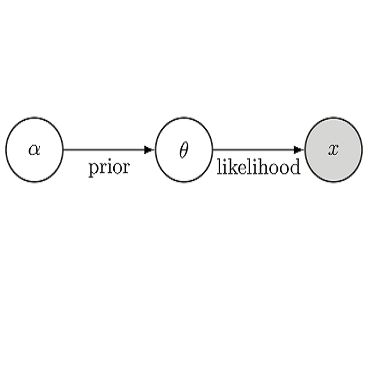Reliably predicting the future spread of brain tumors using imaging data and on a subject-specific basis requires quantifying uncertainties in data, biophysical models of tumor growth, and spatial heterogeneity of tumor and host tissue. This work introduces a Bayesian framework to calibrate the spatial distribution of the parameters within a tumor growth model to quantitative magnetic resonance imaging (MRI) data and demonstrates its implementation in a pre-clinical model of glioma. The framework leverages an atlas-based brain segmentation of grey and white matter to establish subject-specific priors and tunable spatial dependencies of the model parameters in each region. Using this framework, the tumor-specific parameters are calibrated from quantitative MRI measurements early in the course of tumor development in four rats and used to predict the spatial development of the tumor at later times. The results suggest that the tumor model, calibrated by animal-specific imaging data at one time point, can accurately predict tumor shapes with a Dice coefficient > 0.89. However, the reliability of the predicted volume and shape of tumors strongly relies on the number of earlier imaging time points used for calibrating the model. This study demonstrates, for the first time, the ability to determine the uncertainty in the inferred tissue heterogeneity and the model predicted tumor shape.
翻译:利用成像数据和按特定主题预测脑肿瘤未来扩散的情况,需要量化数据、肿瘤生长的生物物理模型以及肿瘤和宿主组织的空间异质性方面的不确定性。这项工作引入了巴伊西亚框架,将肿瘤生长模型中参数的空间分布校准为微量磁共振成像(MRI)数据,并用临床前的显微镜模型展示其实施情况。框架利用灰白物质的图解脑分解来确定每个区域模型参数的具体主题前程和可捕捉性空间依赖性。使用这个框架,肿瘤特定参数根据肿瘤发育过程中四大鼠早期的定量磁共振成测量结果加以校准,用于预测肿瘤的空间发展。结果显示,由动物特定成像数据校准的肿瘤模型在一个时间点上加以校准,能够准确预测肿瘤形状,Dice系数 > 0.89。然而,预测的肿瘤数量和形状的可靠性在很大程度上取决于模型最初的成像时间点数,用以测定模型的预测的稳定性和肿瘤结构。本研究显示,用于测定模型的概率和肿瘤结构。该模型的推算能力。




